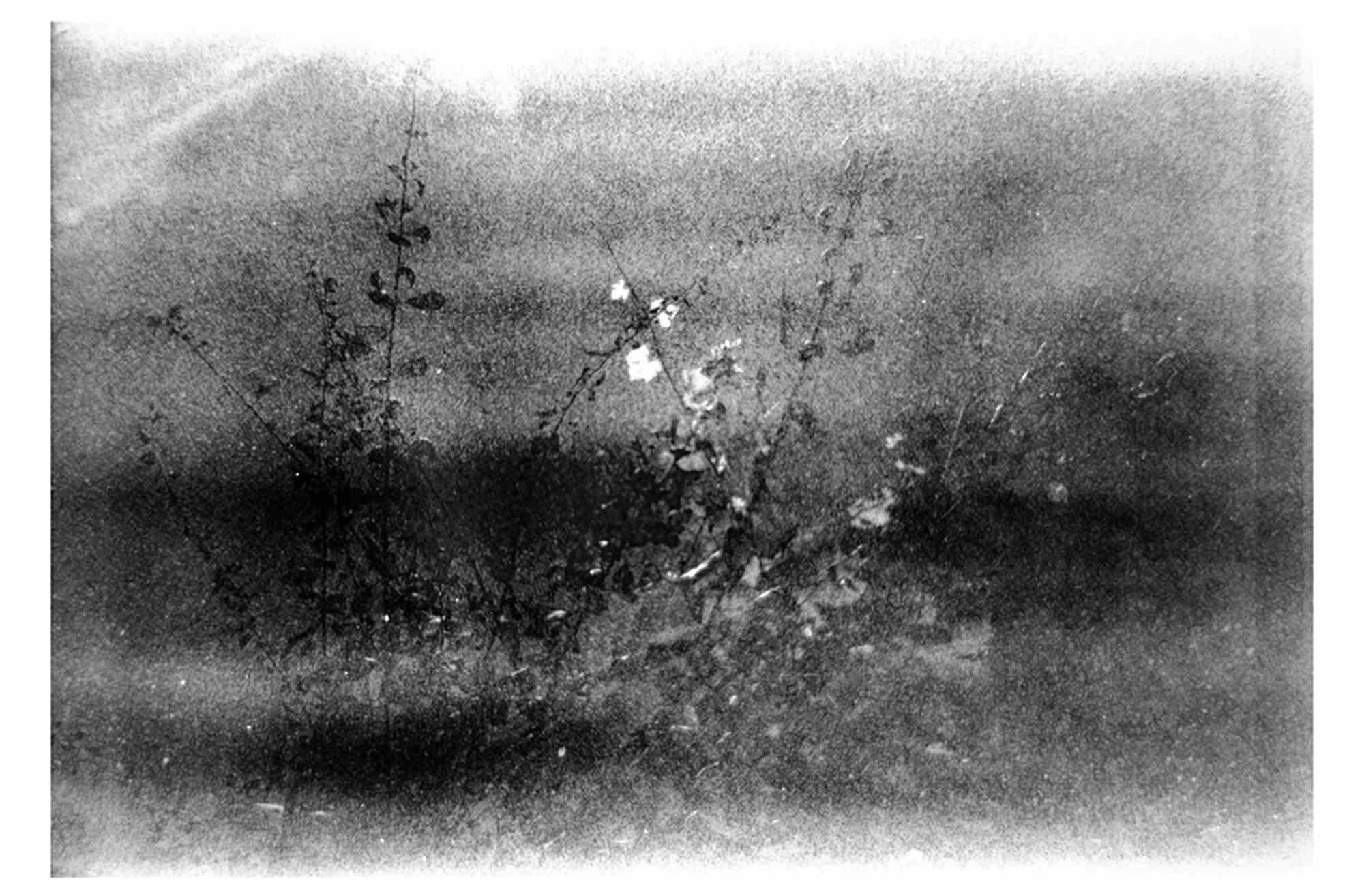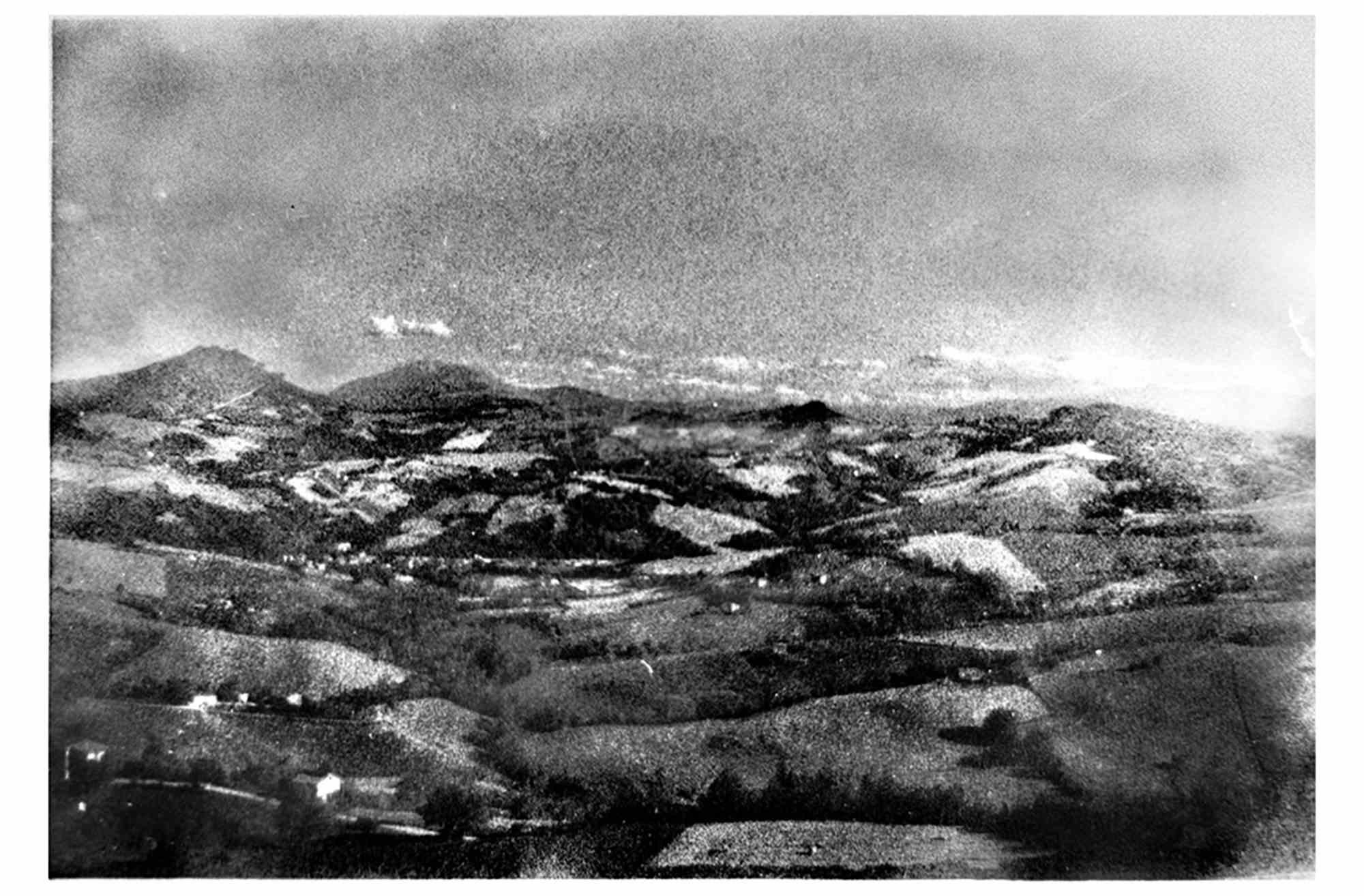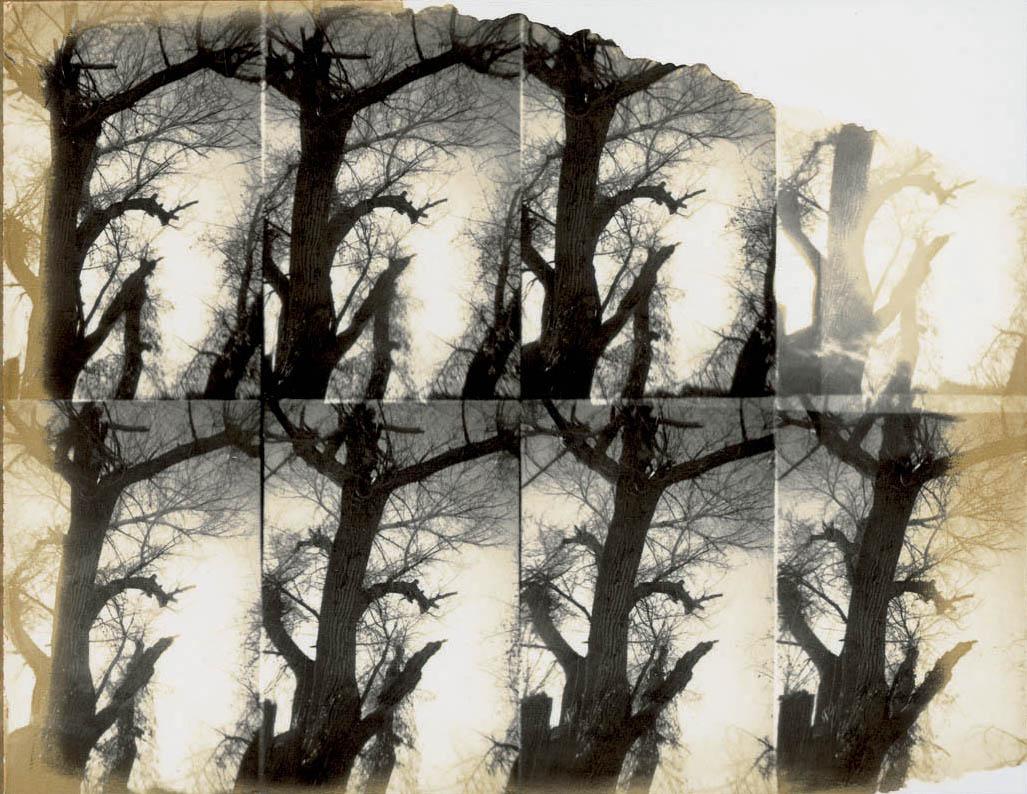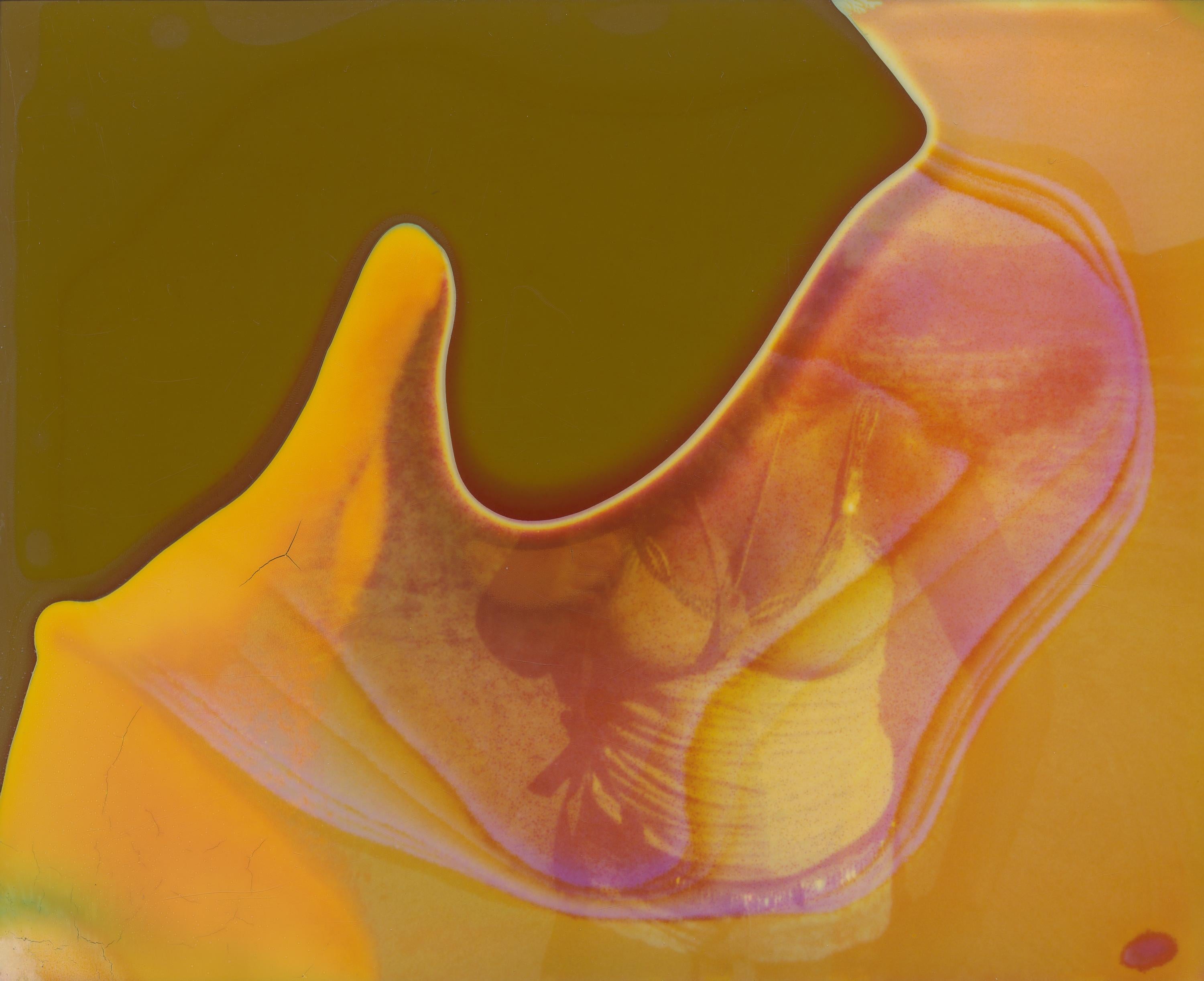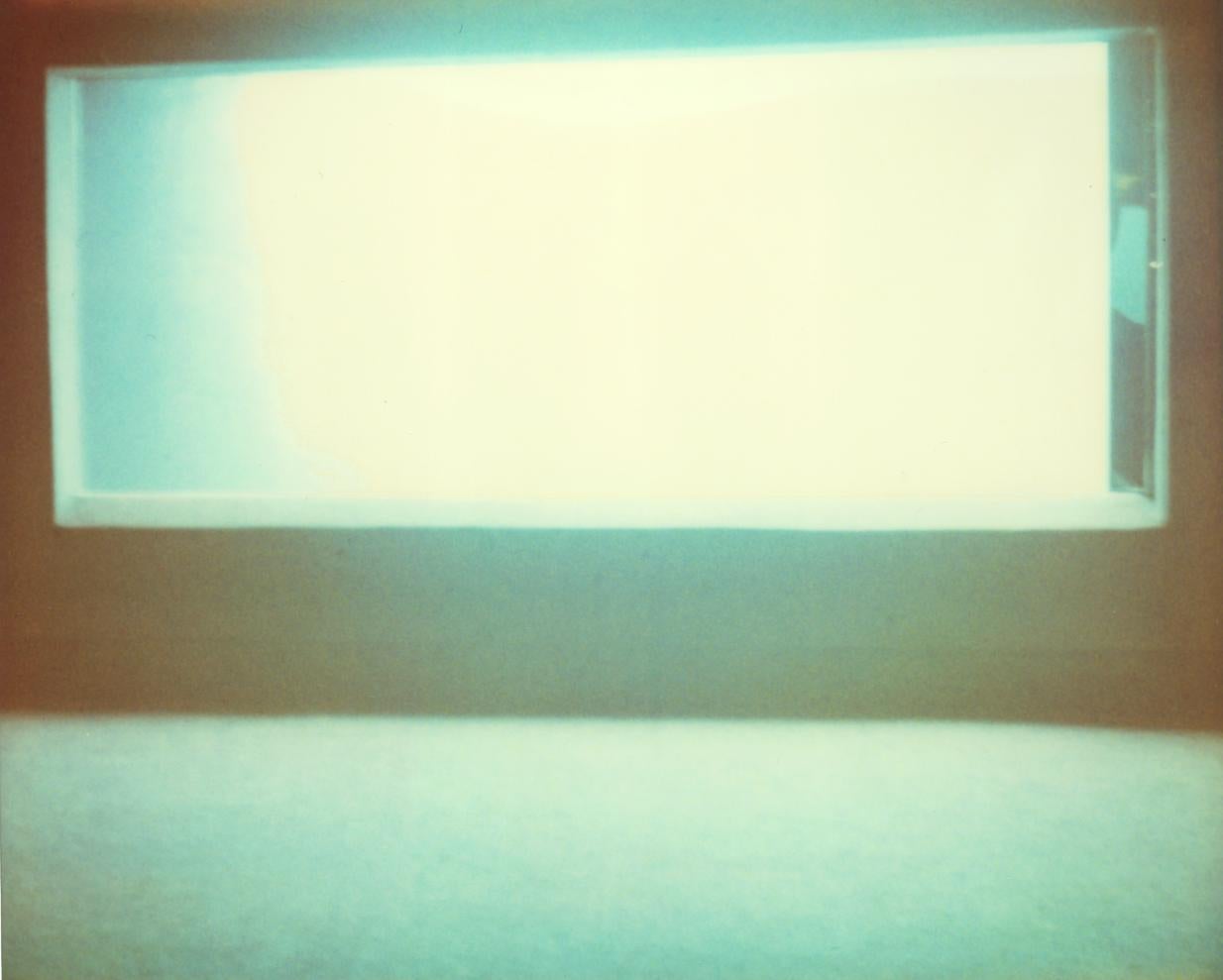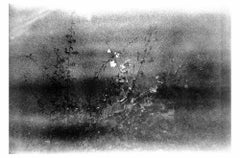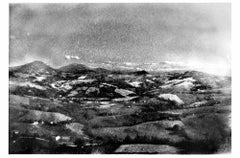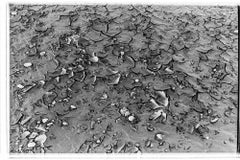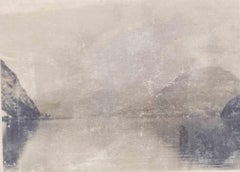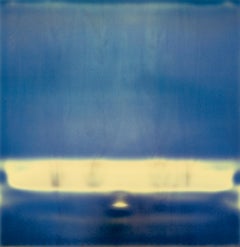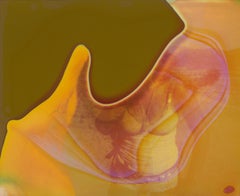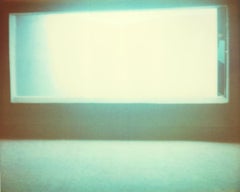Items Similar to Expired_14_2020 - Photograph by Serena Zeppilli
Want more images or videos?
Request additional images or videos from the seller
1 of 5
Serena Zeppilli Expired_14_2020 - Photograph by Serena Zeppilli2020
2020
$806.48
£606.14
€680
CA$1,117.39
A$1,214.56
CHF 650.17
MX$14,681.16
NOK 8,193.42
SEK 7,556.46
DKK 5,180.08
About the Item
This photograph Expired_14_2020 was taken by the Italian photographer Serena Zeppilli.
It is part of the series "I was looking for something that I have seen already". Fine art print on baryta paper. Limited edition of 6.
Hand-signed and numbered on the back. Photos have been made with expired 35mm films that the artist has found in her parents' old garage in Porto San Giorgio, her hometown.
"I was young, I was kid and province's life where I grow up started to be restrict for me. I decided to leave, going away, leaving my small country: my family, my sea, my hills. While I was going everything appeared easier, even was far, I was sure that there I could have found something better, even because anyway I knew that I could come back anytime. I have smelt, I have touched, I have seen, I have tasted, I have heard; sometimes I have found something as well. I did not think to return. Come back home is never easy after so long, I felt like departure and arrive points were going to overlap and dissolve at the same time. Everything seemed the same even it was so different. I am definitely back home. I have started to play with smells, flavors and noises again, senses that I have forgotten already. Outside everything seemed charmer, maybe better, unstable for sure. I have occupied a place for a while, stealing it to someone else, filling it and suddenly emptying it for the next one on the list. Now I certainly believe that the place that I was looking for is waiting for me, it has a space just for me, it has always been in my mind and even if can be difficult to stay in there, it is the only one that at the moment I can recognize as mine."
- Creator:Serena Zeppilli
- Creation Year:2020
- Dimensions:Height: 11.82 in (30 cm)Width: 17.72 in (45 cm)Depth: 0.04 in (1 mm)
- Medium:
- Movement & Style:
- Period:
- Framing:Framing Options Available
- Condition:Insurance may be requested by customers as additional service, contact us for more information.
- Gallery Location:Roma, IT
- Reference Number:Seller: T-1275571stDibs: LU65039261102
About the Seller
4.9
Platinum Seller
Premium sellers with a 4.7+ rating and 24-hour response times
1stDibs seller since 2017
7,848 sales on 1stDibs
Typical response time: 1 hour
- ShippingRetrieving quote...Shipping from: Roma, Italy
- Return Policy
More From This Seller
View AllExpired_08_2020 -Photograph by Serena Zeppilli - 2020
Located in Roma, IT
This photograph Expired_08_2020 was taken by the Italian photographer Serena Zeppilli.
It is part of the series "I was looking for something that I...
Category
21st Century and Contemporary Modern Figurative Photography
Materials
Photographic Paper
Expired_09_2020 - Photograph by Serena Zeppilli
Located in Roma, IT
This photograph Expired_09_2020 was taken by the Italian photographer Serena Zeppilli.
It is part of the series "I was looking for something that I ha...
Category
21st Century and Contemporary Contemporary Figurative Photography
Materials
Photographic Paper
Tre Archi_09_2021 - Photograph by Serena Zeppilli
Located in Roma, IT
This photograph Tre Archi_09_2021 was taken by the Italian photographer Serena Zeppilli.
It is part of the series "Tre Archi 2021". Ink Jet fine art print o...
Category
21st Century and Contemporary Contemporary Figurative Photography
Materials
Photographic Paper
Old days Photo - Landscape - Vintage Photo - Late 18th Century
Located in Roma, IT
Old days Photo - Landscape is a black and white vintage photo, realized in the late 19th century.
Good conditions and aged.
It belongs to a historical and Nostalgic album including...
Category
Late 18th Century Modern Figurative Photography
Materials
Photographic Paper
Old Days - Vintage Photo - Landscape - Early 20th Century
Located in Roma, IT
Old Days - Landscape is a vintage black and white photograph realized in the Early 20th Century.
Good conditions.
Category
Early 20th Century Contemporary Figurative Photography
Materials
Photographic Paper
First Images of the Moon - Vintage Photograph - 1969/70
Located in Roma, IT
First images of the moon is a vintage black and white photograph realized in between 1969 and 1970, during the first missions to the Moon.
Good conditions.
Category
1960s Contemporary Figurative Photography
Materials
Photographic Paper
You May Also Like
Untitled Sequence (Stranger than Paradise) - Polaroid, Landscape Photography
By Stefanie Schneider
Located in Morongo Valley, CA
Untitled Sequence (Stranger than Paradise), 2005
30x38cm, Edition of 10,
Archival C-Print, based on a Polaroid.
Certificate and Signature label.
artist Inventory No. 844.
Not m...
Category
2010s Contemporary Landscape Photography
Materials
Photographic Paper, C Print, Color, Polaroid, Archival Paper
Dreamscape (Wastelands) - Contemporary, Abstract, Polaroid, Expired, Photograph
By Stefanie Schneider
Located in Morongo Valley, CA
Dreamscape (Wastelands), 2003
20x20cm
Edition of 10, plus 2 Artist Proofs.
Archival C-Print, based on the original Polaroid.
Certificate and Signature label.
Artist inventor...
Category
Early 2000s Contemporary Color Photography
Materials
Archival Paper, Photographic Paper, C Print, Color, Polaroid
Living in a Dream (Till Death do us Part) - Contemporary, Polaroid, Women
By Stefanie Schneider
Located in Morongo Valley, CA
Living in a Dream (Till Death do us Part) - 2005
20x20cm,
Edition of 10,
Archival C-Print print, based on the Polaroid.
Certificate and Signature label, artist Inventory No. 9781.
Not mounted.
on offer is a piece from the movie "Till Death do us Part"
Stefanie Schneider’s Till Death Do Us Part
or “There is Only the Desert for You.”
BY DREW HAMMOND
Stefanie Schneider’s Til Death to Us Part is a love narrative that comprises three elements:
1.
A montage of still images shot and elaborated by means of her signature technique of using Polaroid formats with outdated and degraded film stock in natural light, with the resulting im ages rephotographed (by other means) enlarged and printed in such a way as to generate further distortions of the image.
2.
Dated Super 8 film footage without a sound track and developed by the artist.
3.
Recorded off-screen narration of texts written by the actors or photographic subjects, and selected by the artist.
At the outset, this method presupposes a tension between still and moving image; between the conventions about the juxtaposition of such images in a moving image presentation; and, and a further tension between the work’s juxtaposition of sound and image, and the conventional relationship between sound and image that occurs in the majority of films. But Till Death Do Us Part also conduces to an implied synthesis of still and moving image by the manner in which the artist edits or cuts the work.
First, she imposes a rigorous criterion of selection, whether to render a section as a still or moving image. The predominance of still images is neither an arbitrary residue of her background as a still photographer—in fact she has years of background in film projects; nor is it a capricious reaction against moving picture convention that demands more moving images than stills. Instead, the number of still images has a direct thematic relation to the fabric of the love story in the following sense. Stills, by definition, have a very different relationship to time than do moving images. The unedited moving shot occurs in real time, and the edited moving shot, despite its artificial rendering of time, all too 2009often affords the viewer an even greater illusion of experiencing reality as it unfolds. It is self-evident that moving images overtly mimic the temporal dynamic of reality.
Frozen in time—at least overtly—still photographic images pose a radical tension with real time. This tension is all the more heightened by their “real” content, by the recording aspect of their constitution. But precisely because they seem to suspend time, they more naturally evoke a sense of the past and of its inherent nostalgia. In this way, they are often more readily evocative of other states of experience of the real, if we properly include in the real our own experience of the past through memory, and its inherent emotions.
This attribute of stills is the real criterion of their selection in Til Death Do Us Part where consistently, the artist associates them with desire, dream, memory, passion, and the ensemble of mental states that accompany a love relationship in its nascent, mature, and declining aspects.
A SYNTHESIS OF MOVING AND STILL IMAGES BOTH FORMAL AND CONCEPTUAL
It is noteworthy that, after a transition from a still image to a moving image, as soon as the viewer expects the movement to continue, there is a “logical” cut that we expect to result in another moving image, not only because of its mise en scène, but also because of its implicit respect of traditional rules of film editing, its planarity, its sight line, its treatment of 3D space—all these lead us to expect that the successive shot, as it is revealed, is bound to be another moving image. But contrary to our expectation, and in delayed reaction, we are startled to find that it is another still image.
One effect of this technique is to reinforce the tension between still and moving image by means of surprise. But in another sense, the technique reminds us that, in film, the moving image is also a succession of stills that only generate an illusion of movement. Although it is a fact that here the artist employs Super 8 footage, in principle, even were the moving images shot with video, the fact would remain since video images are all reducible to a series of discrete still images no matter how “seamless” the transitions between them.
Yet a third effect of the technique has to do with its temporal implication. Often art aspires to conflate or otherwise distort time. Here, instead, the juxtaposition poses a tension between two times: the “real time” of the moving image that is by definition associated with reality in its temporal aspect; and the “frozen time” of the still image associated with an altered sense of time in memory and fantasy of the object of desire—not to mention the unreal time of the sense of the monopolization of the gaze conventionally attributed to the photographic medium, but which here is associated as much with the yearning narrator as it is with the viewer.
In this way, the work establishes and juxtaposes two times for two levels of consciousness, both for the narrator of the story and, implicitly, for the viewer:
A) the immediate experience of reality, and
B) the background of reflective effects of reality, such as dream, memory, fantasy, and their inherent compounding of past and present emotions.
In addition, the piece advances in the direction of a Gesammtkunstwerk, but in a way that reconsiders this synaesthesia as a unified complex of genres—not only because it uses new media that did not exist when the idea was first enunciated in Wagner’s time, but also because it comprises elements that are not entirely of one artist’s making, but which are subsumed by the work overall. The totality remains the vision of one artist.
In this sense, Till Death Do Us Part reveals a further tension between the central intelligence of the artist and the products of other individual participants. This tension is compounded to the degree that the characters’ attributes and narrated statements are part fiction and part reality, part themselves, and part their characters. But Stefanie Schneider is the one who assembles, organizes, and selects them all.
THE RELATIONSHIP BETWEEN THIS IDEA (above) AND PHOTOGRAPHY
This selective aspect of the work is an expansion of idea of the act of photography in which the artistic photographer selects that which is already there, and then, by distortion, definition or delimitation, compositional and lighting emphasis, and by a host of other techniques, subsumes that which is already there to transform it into an image of the artist’s contrivance, one that is no less of the artist’s making than a work in any other medium, but which is distinct from many traditional media (such as painting) in that it retains an evocation of the tension between what is already there and what is of the artist’s making. Should it fail to achieve this, it remains, to that degree, mere illustration to which aesthetic technique has been applied with greater or lesser skill.
The way Til Death Do Us Part expands this basic principle of the photographic act, is to apply it to further existing elements, and, similarly, to transform them. These additional existing elements include written or improvised pieces narrated by their authors in a way that shifts between their own identities and the identities of fictional characters. Such characters derive partially from their own identities by making use of real or imagined memories, dreams, fears of the future, genuine impressions, and emotional responses to unexpected or even banal events. There is also music, with voice and instrumental accompaniment. The music slips between integration with the narrative voices and disjunction, between consistency and tension. At times it would direct the mood, and at other times it would disrupt.
Despite that much of this material is made by others, it becomes, like the reality that is the raw material of an art photo, subsumed and transformed by the overall aesthetic act of the manner of its selection, distortion, organization, duration, and emotional effect.
* * *
David Lean was fond of saying that a love story is most effective in a squalid visual environment. In Til Death Do Us Part, the squalor of the American desert...
Category
Early 2000s Contemporary Color Photography
Materials
Archival Paper, Photographic Paper, C Print, Color, Polaroid
Silence Void (Stay) - Polaroid
By Stefanie Schneider
Located in Morongo Valley, CA
Silence Void (Stay) - 2006
20x20cm,
Edition of 10,
Archival C-Print, based on the Polaroid.
Certificate and Signature label.
Artist Inventory No. 2116.
Not mounted.
Stefanie...
Category
Early 2000s Contemporary Color Photography
Materials
Photographic Film, Archival Paper, C Print, Color, Polaroid
April is the Cruelest Month - Contemporary, Landscape, Polaroid, Analog
By Stefanie Schneider
Located in Morongo Valley, CA
April is the Cruelest Month - The Getaway (The Last Picture Show) - 1999
20x20cm,
Edition of 10 plus 2 Artist Proofs.
Archival C-Print, based on the Polaroid.
Artist inventory N...
Category
Early 2000s Contemporary Color Photography
Materials
Archival Paper, Photographic Paper, C Print, Color, Polaroid
Dreamscape (Wastelands) - Contemporary, Abstract, Polaroid, Expired, Photograph
By Stefanie Schneider
Located in Morongo Valley, CA
Dreamscape (Wastelands) - 2003
128x125cm,
Edition 4/5.
Analog C-Print, hand-printed by the artist on Fuji Crystal Archive Paper, based on the original Polaroid.
Artist inventory ...
Category
Early 2000s Contemporary Color Photography
Materials
Archival Paper, Photographic Paper, C Print, Color, Polaroid
More Ways To Browse
Joan Miro 1975
Kandinsky And Prints
South Africa Painting
Vintage Warbirds
Continental School
Crab Art
Hare Sculpture
Japanese Print Original
Robert Long
Used Grenade
19th Century Black And White Lithograph
Alisa Onipchenko Cherniakovska
Drypoint Etching Framed
Figurative Surrealist Mid Century
Framed Signed Numbered Art
Lithograph Architectural
Round Framed Art
Set Of Etchings
